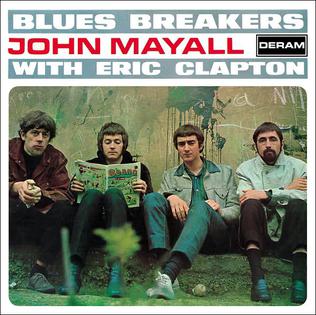
Here is a story about a classic rock anthem and a man who will be celebrated in perpetuity for his mentoring of legendary rock/blues talent.
After the breakup of John Mayall and the Bluesbreakers in early 1969, John Mayall went out on his own his own and recorded a live album called "Vanishing Point." Having been an aspiring artist, he did the albums cover work (as he did with most of his albums). The concert was recorded at Billy Graham's Fillmore East and featured a less guitar oriented theme than previous concerts.
To the staff here at Monahanssong, the most memorable track was "Room to Move" which got great airplay nationwide on emerging AOR FM stations like WNEW in New York. The track features Mayall providing an unprecedented harmonica performance with vocals and mouth percussion played with a lightening fast flute that doubled his own notes (played by John Almond). He calls his harmonica breathing "chicka-chicka," where you breathe in every other beat. The result was a wholly energetic sound that brought the Fillmore East to it's knees that night. Despite charting at #102, the song became a bit of a rock anthem at the time and was a frequently played cut at parties when people wanted to pick things up!
It may seem peculiar
How I think o'you
If you want me, darlin'
Here's what you must do
You gotta give me
'cause I can't give the best
Unless I got room to move
If you want me darlin'
Take me how you can
I'll be circulating
'cause that's the way I am
You gotta give me
'cause I can't give the best
Unless I got room to move
"Vanishing Point" would be one of his most popular albums out of the fifty plus albums he has recorded in his career.
We would be irresponsible if we did not point out Mayall's historic influence on both British and American music.
John Mayall was born November 29, 1933 in Macclesfield, England. He grew up enthralled with his father's 78 rpm records, especially his blues records. He would build an enormous collection in his lifetime. He went to art school and did a stint in England's armed services. It was while he was stationed in Korea that he bought a guitar. He played when he could, but was mostly working as a graphic artist once discharged. The very early 1960's saw the arrival of amps, guitars and harmonica playing in England. A blues club opened in London and that was it for him. He quit his job and began topplay full time.
The blues were slowly catching on and he was able to back-up touring blues greats like John Lee Hooker, T-bone Walker and Sonny Boy Williamson when they toured England.
He began to put various configurations of bands together under the name "The Bluesbreakers". As a result, the band had a fluid roster and was a noted proving ground for talent. This may well be what Mayall will always be famous for.
As a legend of English Blues, John Mayall is likely to be remembered for his leadership and mentoring of some of the greatest names in rock as opposed to his body of work. Guitarists Eric Clapton, Peter Green, and Mick Taylor joined his band in a remarkable succession in the mid-'60s, honing their chops with Mayall before going on to join Cream, Fleetwood Mac, and the Rolling Stones, respectively. John McVie and Mick Fleetwood, Jack Bruce, Aynsley Dunbar, Dick Heckstall-Smith, Andy Fraser (of Free), John Almond, and Jon Mark also played and recorded with Mayall for varying lengths of time. (Credit to Ritchie Unterberger for much of Mayall's bio here).
So we need to show the love here. We recommend you start with "Turning Point" and "John Mayall and the Bluesbreakers with Eric Clapton" (1966). This album is also called "Beano" as that is the name of the comic Clapton is reading on the cover.
So here it is. Make sure you have some room to move yourself as you listen to this one!


No comments:
Post a Comment